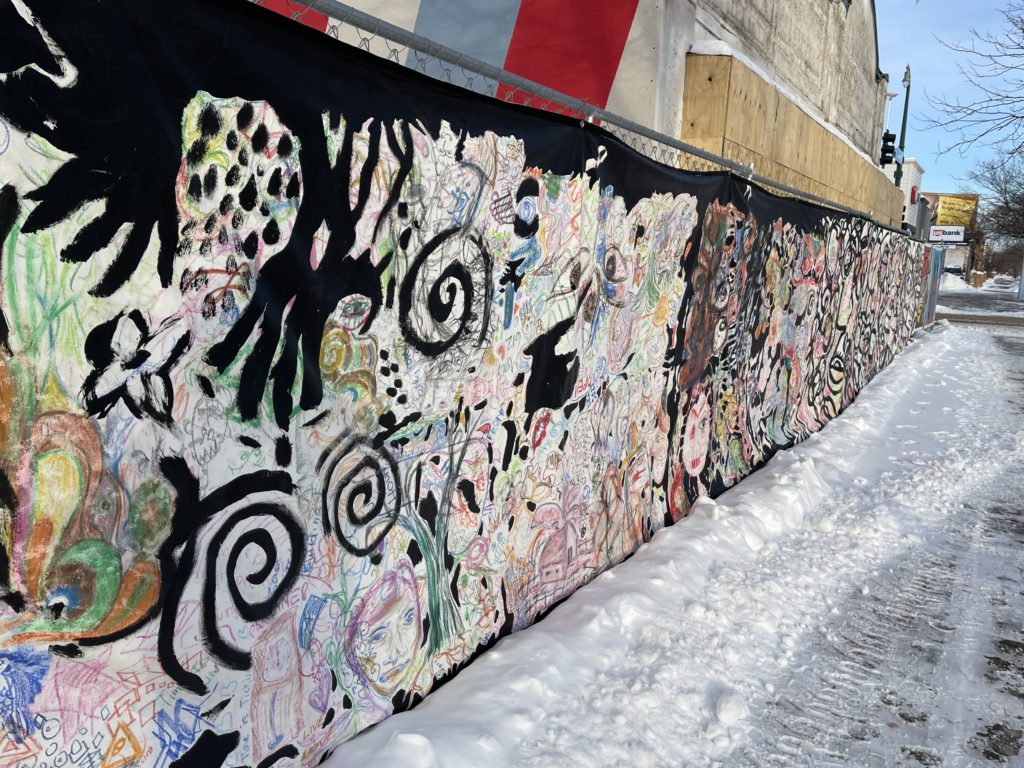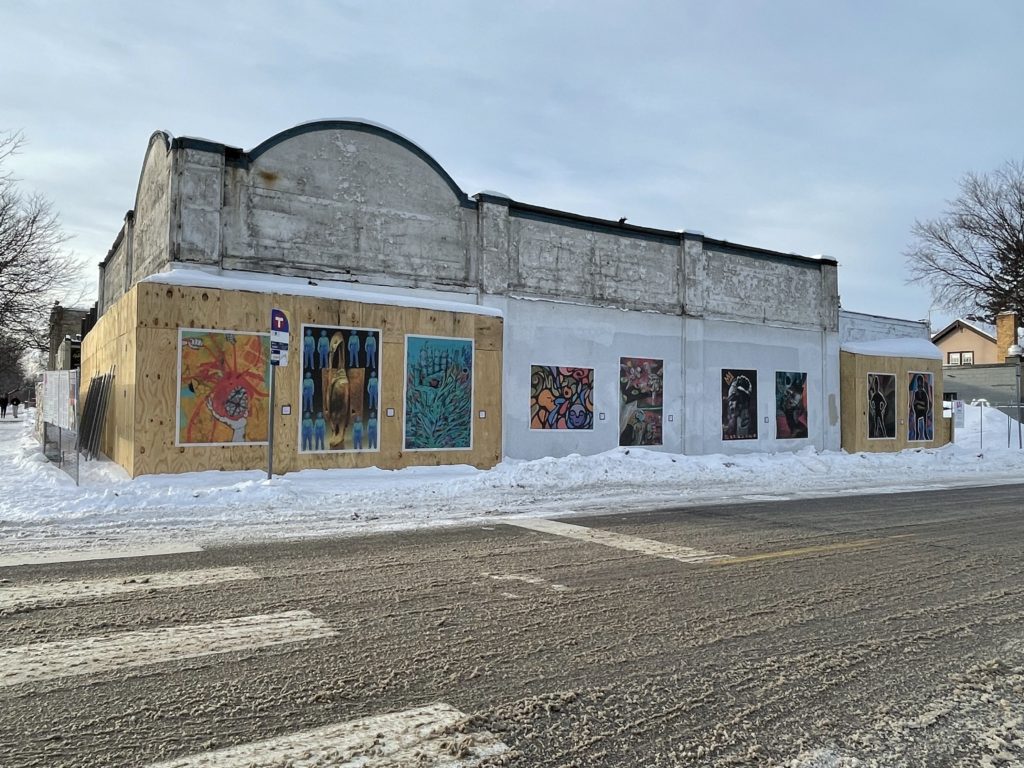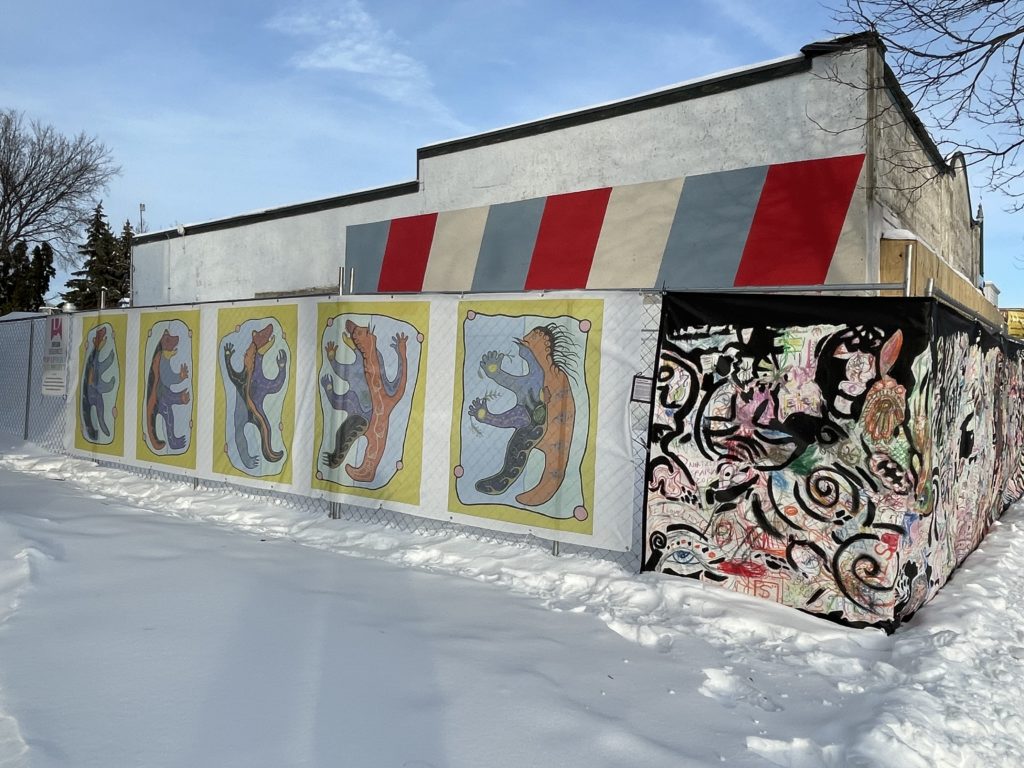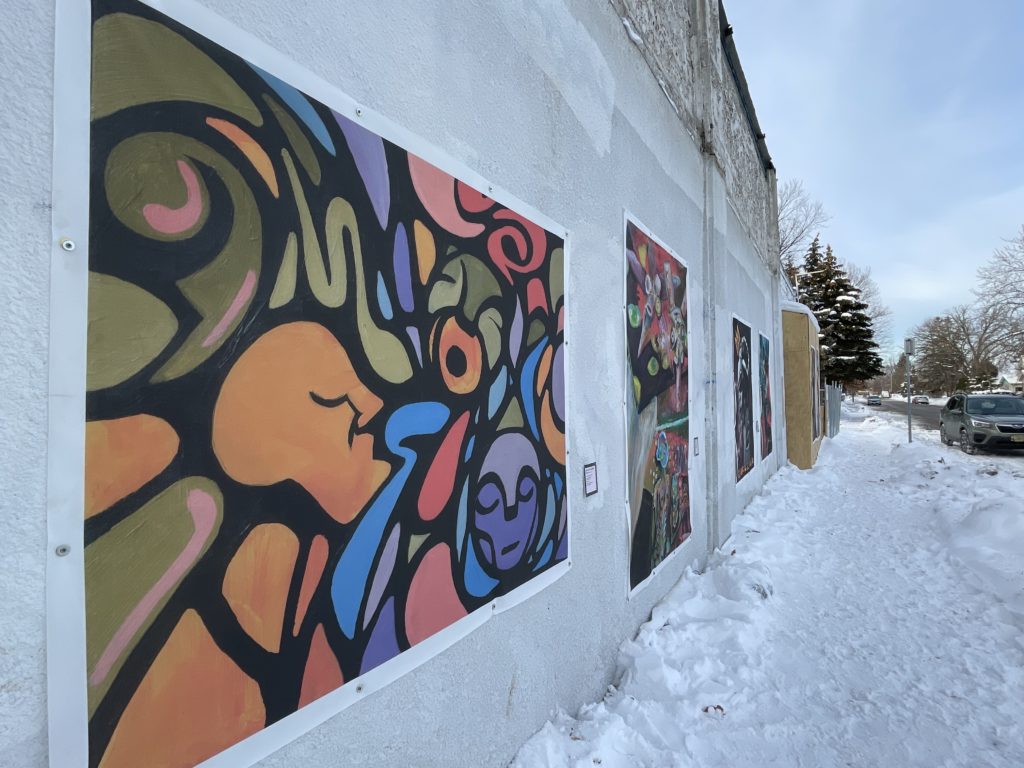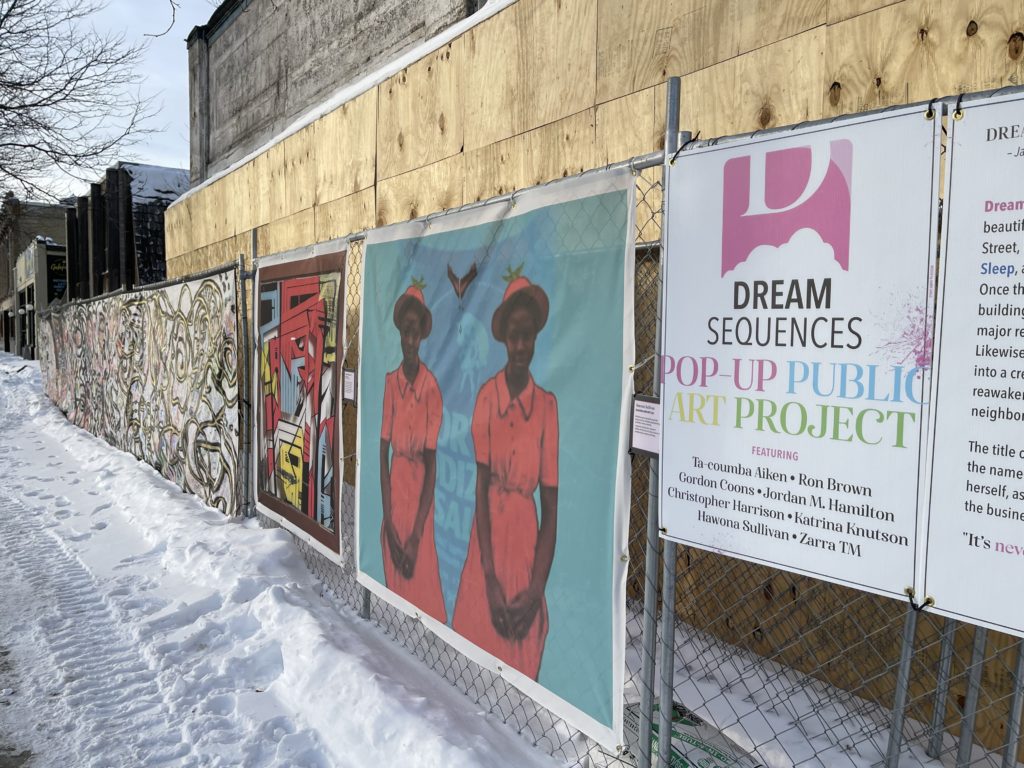Community Spotlight, News
Pop-up Outdoor Art Gallery Celebrates Reawakening of Elsa’s House of Sleep on East Lake Street
At the northwest corner of East Lake Street and 36th Avenue South, Elsa’s House of Sleep – a furniture, rug and mattress store – has been shuttered and dark since 2019. But over the past few days, a group of volunteers has been installing “Dream Sequences,” a pop-up public art project intended to beautify the corner as the property owners begin a major renovation of the building and the store.
Curated and organized by Jack Becker, retired founder of the nonprofit Forecast Public Art, the exhibit features the work of eight local artists: Ta-coumba T. Aiken, Ron Brown, Gordon Coons, Jordan M. Hamilton, Christopher Harrison, Katrina Knutson, Hawona Sullivan and Zarra TM. Most of the artworks on display are digital enlargements of original works by the artists, mounted to plywood or fencing surrounding the building. The largest work is a 52-foot painted mural on canvas by Ta-coumba Aiken, a nationally acclaimed artist who created art for Elsa Rezene, founder of Elsa’s House of Sleep, in the mid-1970s.
“Dream Sequences” is a production of 36th A.R.T. (Avenue Revitalization and Transformation), a volunteer group of neighborhood residents working to address safety, accessibility, aesthetics and interpretive wayfinding along 36th Avenue, from Lake Street to 25th Street.
According to Becker, the title of the project, “Dream Sequences” was inspired by the name of the store as well as a quote from Elsa Rezene herself as recalled by her son, Tetra Constantino: “It’s never too late to start dreaming.” Constantino is currently managing a newly renovated Elsa’s store on University Avenue in Saint Paul – and the redesign and total restoration of the closed East Lake Street store. Both locations are part of his mother’s legacy; Elsa was a visionary entrepreneur who moved to Minnesota from Asmara, Eritrea in 1966. She died in 2004.
“What started out as an effort to mitigate blight along East Lake Street has become a creative celebration of a Black-owned business working to reopen its doors and revitalize an important intersection in Southeast Minneapolis,” says Becker. “It’s also an opportunity to tell Elsa’s inspiring story. Elsa’s quote about it never being too late to start dreaming could serve as the mantra for the recovery of the Lake Street corridor. I hope this project helps demonstrate ways artists and art can contribute to Lake Street’s recovery and reawakening.”
Contantino was delighted when approached to give permission for the “Dream Sequences” project. “Artists have always supported our business, so it’s great to be able to support them and this project. I’m so pleased to see artists and folks from the community come out and support us while we work to get the business reopened; it’s just a really great vibe. It’s also great to have something beautiful to put up while we’re under construction.”
Financial support for “Dream Sequences” was provided by the Lake Street Council, Elsa’s House of Sleep, Longfellow Community Council, Xcel Energy and Trustone Financial. Technical support and project management was provided by Krista Pearson. Additional in-kind support was provided by Shapco Printing, Brian Cornell, Mark Lange, Laura Mylan, Amy Sundby Jeanchaiyaphum, Mark Safford, Barebones Productions, Dering Pierson Group and many community volunteers.
Charise Canales, Manager of Placemaking & Activation for the Lake Street Council, said, “Lake Street Council is proud to support local artists in enhancing the vibrancy of our corridor.”
Important Dates:
● Installation took place December 18-20, 2022
● A community celebration will take place late January 2023
● Exhibit end date: April 20, 2023
History of the Site: The corner of East Lake Street and 36th Avenue South has long been an important corridor connecting the Seward and Longfellow neighborhoods of Southeast Minneapolis. In the 1960s, the building that houses Elsa’s was home to Ostrom’s Bait and Tackle, which sold the first Rapala fishing lures in the U.S.; Ostrom’s later became the U.S. distributor for the Minnesota-based Rapala Corporation. In the 1990s and into the 2000s, the building housed Reels Video Store during the height of the home video and video game rental industry.



